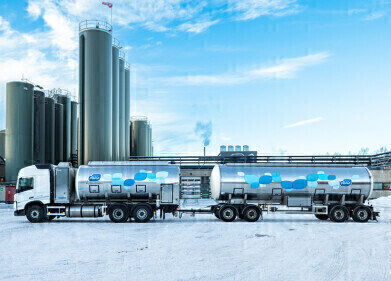Hazardous waste
Toxic Tar Sands Conquered by Teenager’s Fifth Grade Science Memories
Dec 10 2014
What does it take to win your age category at the Google Science Fair? In the case of 18-year-old Canadian Hayley Todesco, the answer is simple: a great memory, a burning interest in biology, ingenuity and an awful lot of hard work.
Hayley’s winning invention - a filtration system to clean tar sands - was partly inspired by a fifth-grade science class, along with Al Gore’s documentary, An Inconvenient Truth. Driven to find a solution the to problem of ‘tailings ponds’ - vast areas of land that take hundreds of years to break down toxic sands - she recalled a lesson where she was taught about a sand filter. Back then, the young class had used it to clean muddy water. But Hayley had an idea to modify it for the cleansing of sands that fill tailings ponds with growing amounts of toxic waste. The scale of the problem is clear when considering that by 2025, the total volume of tailings is expected to reach one billion cubic metres.
From fifth grade to the world stage
Hayley’s idea, based on this simple fifth-grade sand filter, needed enhancement to combat the toxic waste. To find the solution, Hayley tapped into her natural interest in bioreactors and the use of bacteria to break down waste. She realised there was the potential to combine each principle - sand and bacteria - to create a new filtration method that would tackle the problem.
It took Hayley just seven months to create a device that would break down one of the main toxins found in tar sands: naphthenic acid. Working from a lab loaned to her by Lisa Gieg at the University of Calgary, she used minimal, accessible resources - including IV bags and aquarium sand - to turn her idea into reality. It was an exciting breakthrough and a strong start to her inventive campaign.
A year and a half later, Hayley had thoroughly tested her device. In fact, it was so successful that it worked 14 times faster than the methods currently used to cleanse toxic matter found in oil sands tailings. Naphthenic Acid resists biodegradation, which is why it would usually take centuries to become safe. But Hayley’s invention - which she refers to as the slow sand filter - would take less than 20 years to cleanse the potent toxin from all oil sands tailings free water.
In addition to winning the 17-18-year-old category at the 2014 Google Science Fair, Hayley also won the 2014 Stockholm Junior Water Prize. Congratulations, Hayley!
What next?
There are lots of different ways to clean-up toxic waste – some of the most exciting and novel include fungi and even onions & garlic.
Events
Mar 18 2025 Expo Santa Fe, Mexico
Mar 18 2025 Moscow, Russia
Mar 19 2025 Manila, Philippines
Mar 20 2025 Guangzhou, China
Mar 24 2025 National Harbour, MD, USA














